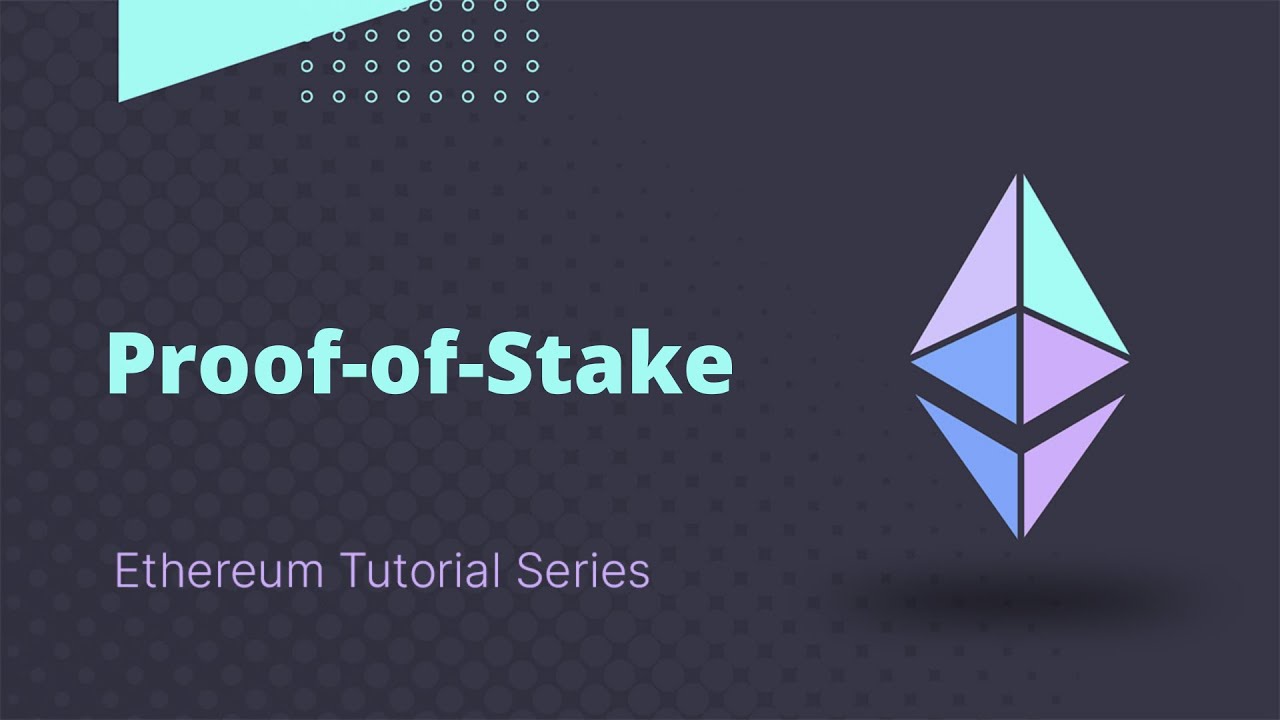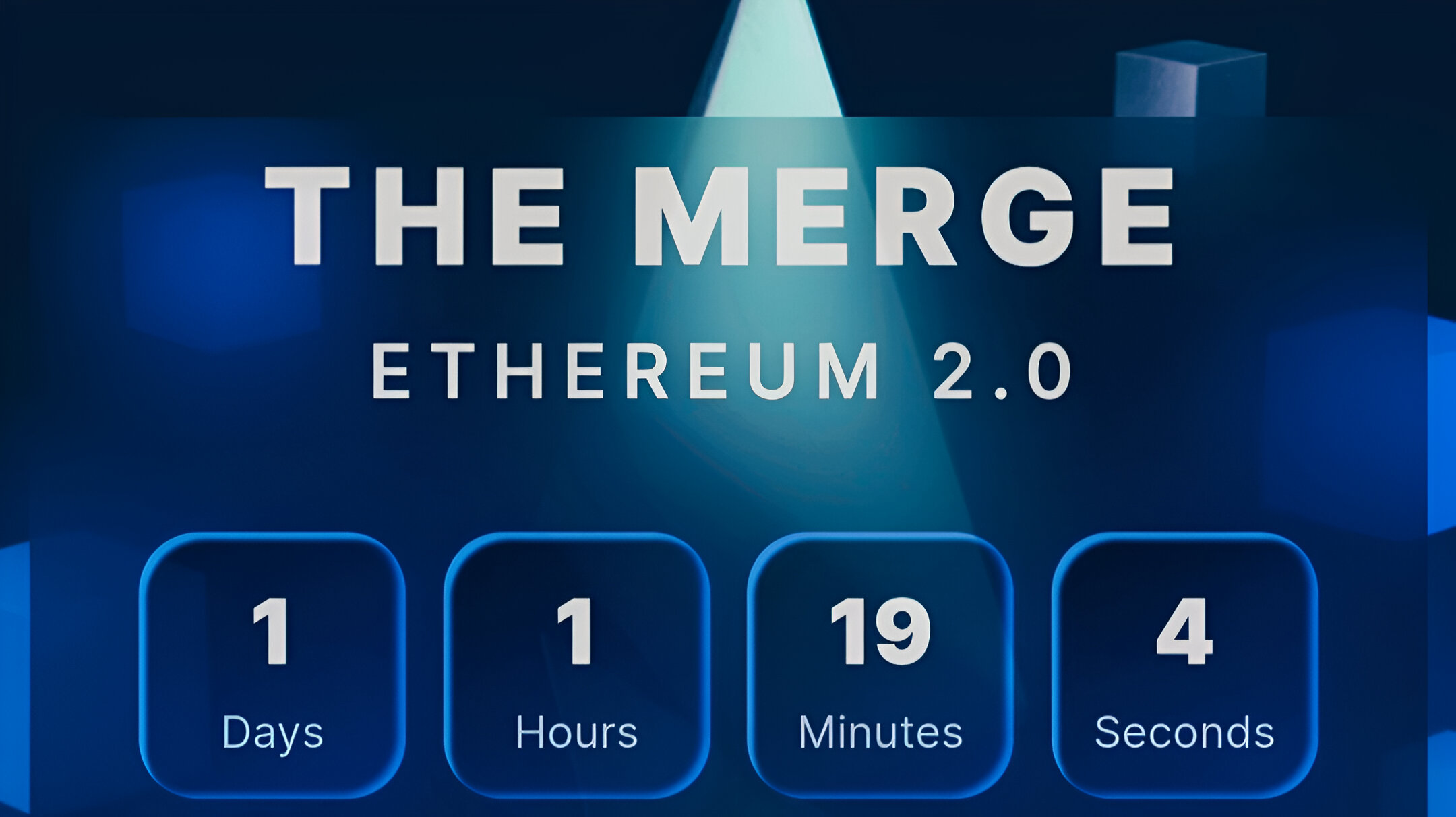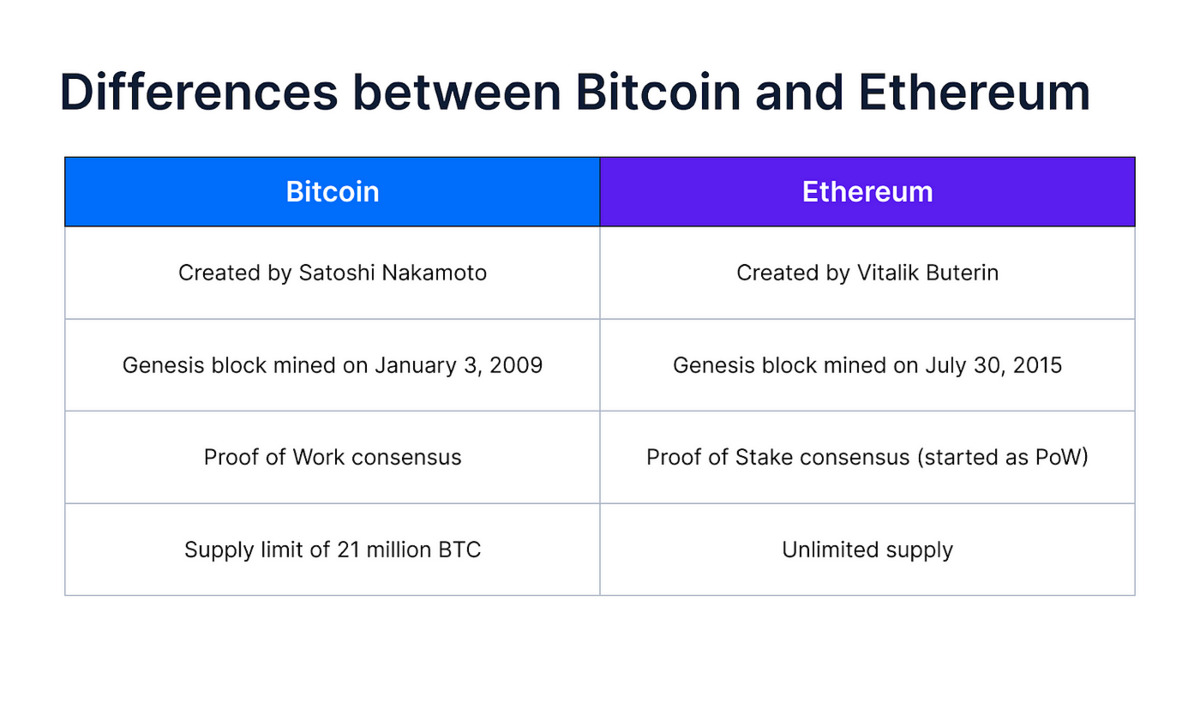What is Ethereum Proof of Stake
Ethereum Proof of Stake (PoS) is a consensus algorithm used by the Ethereum blockchain to validate and secure transactions. Unlike the traditional Proof of Work (PoW) algorithm, which requires miners to compete in solving complex mathematical puzzles to add new blocks to the blockchain, Proof of Stake relies on validators who hold and lock up a certain amount of cryptocurrency to create blocks.
In PoS, validators are chosen to create a new block based on the number of coins they hold and are willing to “stake” as collateral. This concept of staking means that validators have a financial incentive to act honestly and validate transactions accurately, as they risk losing their staked coins if they behave maliciously or negligently.
One of the main advantages of Ethereum PoS is its energy efficiency compared to PoW. Traditional mining operations consume large amounts of electricity due to the computations required to solve the puzzles. In contrast, PoS only requires network participants to prove ownership of a certain amount of cryptocurrency, reducing the carbon footprint associated with mining.
Another benefit of Ethereum PoS is its potential for scalability. PoS allows for faster block validation times, increasing the throughput of the blockchain. This is important for Ethereum, as it aims to support a wide range of decentralized applications (dApps) and smart contracts, which require fast and efficient transaction processing.
Ethereum PoS also offers a more inclusive and accessible approach to network participation. With PoW, mining requires specialized hardware and significant computational power, creating a barrier to entry for many individuals and small-scale miners. In contrast, PoS allows anyone who holds the required amount of cryptocurrency to become a validator, contributing to the decentralization of the network.
Overall, Ethereum Proof of Stake presents a more sustainable, scalable, and inclusive approach to blockchain consensus. It incentivizes validators to act honestly and contributes to the overall security and stability of the Ethereum network. As Ethereum continues to evolve and transition to the PoS model, it is expected to bring significant improvements to the blockchain ecosystem.
How Does Ethereum Proof of Stake Differ from Proof of Work
Ethereum Proof of Stake (PoS) differs from Proof of Work (PoW) in several key ways, offering unique advantages and addressing some of the limitations of the traditional mining-based consensus mechanism.
One of the main differences between PoS and PoW is the way in which new blocks are created and added to the blockchain. In PoW, miners compete to solve complex mathematical puzzles, and the first one to find a valid solution gets to add the block. This process requires substantial computational power and energy consumption.
In contrast, PoS selects validators to create new blocks based on the amount of cryptocurrency they hold and are willing to “stake” as collateral. Validators lock up a certain number of coins and are chosen to validate transactions and add blocks in a deterministic manner, typically based on a combination of factors like their stake size and randomness. This eliminates the need for costly mining equipment and reduces the energy consumption associated with block creation.
Another difference is the concept of block finality. In PoW, blocks are considered probabilistic finality, meaning that there is a small chance that a block can be reverted or orphaned if a longer chain is discovered. This introduces the possibility of double-spending attacks and requires a certain number of confirmations to ensure transaction security.
On the other hand, PoS offers a deterministic finality, meaning that once a block is added to the blockchain and finalized, it cannot be reverted. This significantly reduces the risk of double spending and provides faster transaction finality, improving the user experience and enabling more efficient decentralized applications.
One important aspect of PoS is the role of validators and stakers. In PoW, miners contribute computational power, and their rewards are based on their contribution to the network. In PoS, validators contribute their cryptocurrency holdings and are rewarded based on their stake. This shifts the focus from computational resources to ownership, making participation more accessible to a wider range of individuals and promoting decentralization.
Furthermore, PoS introduces the concept of slashing, a mechanism that penalizes validators for behaving maliciously or negligently. If a validator acts against the consensus rules or attempts to manipulate the system, they can lose a portion or even all of their staked coins. This reinforces the importance of honest behavior and enhances the security of the network.
In summary, Ethereum Proof of Stake offers a more energy-efficient, scalable, and inclusive consensus mechanism compared to traditional Proof of Work. It eliminates the need for resource-intensive mining operations, provides deterministic finality, and allows for broader participation in network validation. These advancements contribute to the overall efficiency, security, and sustainability of the Ethereum blockchain.
Validators and Stakers: Understanding the Roles
In Ethereum Proof of Stake (PoS), two key roles play a crucial role in maintaining the network and securing transactions: validators and stakers. These roles work together to ensure the integrity and reliability of the blockchain.
Validators are responsible for creating new blocks and validating transactions. They are chosen based on their stake size and other factors, such as randomness, to ensure a fair and secure selection process. Validators need to lock up a certain amount of cryptocurrency as collateral, known as staking, to participate in block creation. This collateral serves as an incentive for validators to act honestly and follow the consensus rules.
Stakers, on the other hand, are individuals who hold and lock up a certain amount of cryptocurrency to support the network. By staking their coins, they contribute to the security and stability of the blockchain. Stakers do not directly create blocks or validate transactions but play a crucial role in selecting validators and participating in the consensus process.
Validators and stakers work together to maintain a balanced and decentralized network. Validators rely on the collective stake of stakers to ensure their behavior aligns with the network’s best interests. The more stake a validator has, the higher the responsibility and potential rewards they receive for maintaining the network’s integrity.
Validators are required to perform certain tasks to fulfill their role. These tasks include validating transactions, signing blocks, and participating in the consensus protocol. Validators need to stay online and active to contribute to the network continuously. If a validator goes offline or fails to act honestly, they might face penalties, such as slashing of their staked coins, to discourage malicious behavior.
Stakers, on the other hand, have a more passive role. They stake their coins and trust the validators to act honestly and secure the network. Stakers earn rewards for participating in staking, typically in the form of additional cryptocurrency. These rewards incentivize stakers to hold and lock up their coins, further contributing to the stability and security of the blockchain.
Both validators and stakers have a significant influence on the governance of the PoS network. They have the power to propose and vote on important protocol upgrades and changes, ensuring that the blockchain evolves in a decentralized and consensus-driven manner.
By understanding the unique roles of validators and stakers, we can appreciate the collaborative effort required to maintain and secure a PoS blockchain like Ethereum. It is the combination of these roles that contributes to the efficiency and integrity of the network, making it a viable alternative to the traditional Proof of Work consensus mechanism.
The Beacon Chain: The Backbone of Ethereum Proof of Stake
In the Ethereum Proof of Stake (PoS) ecosystem, the Beacon Chain serves as a crucial component and the backbone of the network. It introduces a new set of protocols and functionalities that are specifically designed to support and facilitate the transition from Proof of Work (PoW) to PoS.
The Beacon Chain acts as the central coordination mechanism for the PoS consensus algorithm. It is responsible for managing the validator registry, organizing validator activations and deactivations, randomizing validator selection, and finalizing blocks. The Beacon Chain operates parallel to the existing Ethereum PoW chain, allowing for a smooth and gradual transition.
One of the key functionalities of the Beacon Chain is the maintenance of the validator registry. This registry holds information about all active and eligible validators in the PoS network. Validators must submit a sufficient stake of cryptocurrency to be registered. The Beacon Chain ensures the proper registration and maintenance of validators to guarantee the integrity and security of the network.
Another significant role of the Beacon Chain is the randomization of validator selection. Through the RANDAO (Random Number Generator Based on Preparatory Commits), the Beacon Chain generates a random source of entropy for selecting validators to participate in block creation and validation. This randomization mitigates the risk of collusion or targeted attacks against the network, ensuring a fair and decentralized process.
The Beacon Chain is also responsible for finalizing blocks in the PoS consensus. Finality refers to the irreversible confirmation of blocks, ensuring that once a block is added to the blockchain, it cannot be reversed or modified. This guarantees the immutability and security of transactions. The Casper protocol, integrated into the Beacon Chain, helps achieve this finality through a process known as “slashing” that penalizes misbehavior or dishonesty by validators.
Additionally, the Beacon Chain plays a crucial role in managing the overall Ethereum network through its ability to handle system-wide upgrades and improvements. It coordinates the implementation of protocol upgrades, including the integration of shard chains, which aim to enhance scalability and enable parallel transaction processing across the Ethereum ecosystem.
As the backbone of Ethereum PoS, the Beacon Chain provides the essential infrastructure and functionality required for a successful transition to the PoS consensus mechanism. It ensures the proper registration and selection of validators, finalizes blocks, promotes decentralization, and accommodates network upgrades. With the Beacon Chain in place, Ethereum is poised to unlock greater scalability, efficiency, and security, ushering in a new era of blockchain technology.
The RANDAO: Randomizing Validator Selection
In the Ethereum Proof of Stake (PoS) consensus algorithm, one of the key components that ensures the fairness and security of validator selection is the Random Number Generator Based on Preparatory Commits (RANDAO). This innovative mechanism plays a crucial role in randomizing the selection process and mitigating the risk of collusion or targeted attacks.
The RANDAO is designed to generate a source of entropy that is used as the basis for selecting validators to participate in block creation and validation. It operates in a multi-phase process to ensure a fair and unbiased random selection. Validators are selected based on their stake size, and the randomness introduced by the RANDAO adds an additional layer of security and decentralization to the selection process.
The first phase of the RANDAO involves validators committing to a random value that they hold secretly. Each validator submits a commitment to a potential random value without revealing the actual value they chose. Once all commitments are submitted, the Beacon Chain collects them and moves to the next phase.
In the second phase, validators reveal the random value they initially committed to. This step is done to ensure that validators have not colluded or manipulated the selection process. The revealed values are combined and hashed together, creating a final random value that is used to determine the validator selection.
The third and final phase completes the process by using the final random value to determine which validators will be selected for the upcoming block creation and validation. Validators are chosen based on a combination of factors, including their stake size and the output of the RANDAO. This random selection ensures fairness and prevents any single entity from having excessive control over the process.
The use of the RANDAO in Ethereum PoS provides several benefits. First and foremost, it introduces a strong element of randomness into the validator selection process. This randomness enhances the security and decentralization of the network, as it becomes extremely difficult for adversaries to predict or manipulate the selection outcome.
Furthermore, the RANDAO increases the difficulty of launching targeted attacks against the network. Adversaries would need to control a significant portion of the network’s stake and accurately guess the randomness introduced by the RANDAO to successfully execute such an attack. This makes it highly impractical and costly for malicious actors to undermine the integrity of the validator selection process.
Overall, the RANDAO is a critical component of Ethereum’s PoS consensus algorithm. It plays a vital role in ensuring the randomness, fairness, and security of validator selection. By incorporating this innovative mechanism, Ethereum PoS takes a significant step forward in promoting a truly decentralized and robust blockchain network.
The Casper Protocol: Finalizing Blocks and Preventing Double Spending
The Casper protocol is a fundamental component of the Ethereum Proof of Stake (PoS) consensus algorithm. It is specifically designed to ensure the finality of blocks, prevent double spending, and enhance the security of the blockchain network.
One of the key features of the Casper protocol is its ability to finalize blocks. Unlike the probabilistic finality of Proof of Work (PoW) where the longest chain is considered the valid one, Casper provides deterministic finality. Once a block is finalized, it becomes part of the permanent and immutable record of transactions on the blockchain. This guarantees the integrity and security of transactions, as finalized blocks cannot be reversed or modified, eliminating the risk of double spending attacks.
The finality provided by the Casper protocol is achieved through a process known as “finality voting.” Validators in the Ethereum PoS network cast votes to confirm the validity of a specific block. Once a supermajority (a significant percentage) of validators agrees on the finality of a particular block, it is considered as finalized. This supermajority requirement ensures consensus among validators and prevents the possibility of rogue validators trying to manipulate the blockchain.
In addition to finalizing blocks, the Casper protocol also incorporates a mechanism known as “slashing.” Slashing is designed to penalize validators who behave maliciously or dishonestly. Validators risk losing a portion or even all of their staked coins if they attempt to double spend, manipulate the consensus, or exhibit any other malicious behavior. This financial incentive encourages validators to act in the best interests of the network and maintain a high level of integrity.
The Casper protocol also promotes the economic security of the PoS network by enforcing the “Nothing at Stake” problem. In a PoS network, validators have nothing to lose by creating multiple chains or withholding votes. However, with the Casper protocol, if a validator attempts to validate multiple chains, they risk being penalized through slashing. This ensures that validators have a financial incentive to act honestly and propose blocks on the main chain, enhancing the security and stability of the network.
By incorporating the Casper protocol into the Ethereum PoS consensus algorithm, the network achieves a higher level of security, efficiency, and finality compared to traditional PoW systems. The protocol eliminates the possibility of double spending, ensures deterministic finality, and incentivizes validators to act honestly. These features are essential for supporting a wide range of decentralized applications (dApps) and smart contracts, making Ethereum PoS a robust and secure blockchain platform.
Staking and Rewards: How to Earn ETH with Proof of Stake
With the transition to Ethereum Proof of Stake (PoS), individuals have the opportunity to earn ETH by participating in the staking process. Unlike the traditional Proof of Work (PoW) model that requires computational power, staking in Ethereum PoS involves holding and locking up a certain amount of cryptocurrency to support the network and validate transactions. Here’s how you can earn ETH through staking.
To start staking, you need to have a minimum amount of ETH as set by the network. This stake serves as collateral to ensure your commitment to the network’s security and integrity. You lock up the specified amount of ETH in a designated staking contract, making it inaccessible for a certain period of time.
By staking your ETH, you contribute to the consensus process and become eligible for validator selection. Validators are responsible for creating and validating blocks in the PoS network. If selected, you have the opportunity to earn ETH rewards proportional to the amount of stake you hold.
The rewards you receive for staking depend on various factors, including the total amount of ETH staked in the network, the length of time you have been staking, and the level of network participation. Validators who behave honestly and follow the consensus rules are rewarded, while those who act maliciously or neglect their responsibilities risk penalties such as slashing, in which they lose a portion of their stake.
Ethereum PoS rewards validators through a combination of block rewards and transaction fees. Validators who successfully create and validate blocks receive a portion of the ETH block rewards, which are distributed based on their contribution and stake size. Additionally, validators may earn transaction fees generated by the transactions included in the blocks they validate.
It’s important to note that staking involves a trade-off between liquidity and potential rewards. When you stake your ETH, it becomes locked and inaccessible for a certain period of time. This means you won’t be able to freely use or transfer the staked ETH during that time. However, in return, you have the opportunity to earn additional ETH rewards.
Staking in Ethereum PoS offers several advantages. It promotes decentralization by allowing anyone with the required amount of ETH to participate in network validation, unlike PoW, which often favors those with specialized mining equipment. Staking also contributes to the security and stability of the network, as validators have a financial incentive to act honestly and maintain the integrity of the blockchain.
Overall, staking provides an opportunity to earn ETH by actively participating in the Ethereum PoS network. By staking your ETH and becoming a validator, you contribute to the security and efficiency of the blockchain while potentially earning additional rewards. As Ethereum continues to evolve, staking is set to play a vital role in the network’s growth, sustainability, and success.
The Benefits of Ethereum Proof of Stake
Ethereum Proof of Stake (PoS) brings several significant benefits to the blockchain ecosystem compared to the traditional Proof of Work (PoW) consensus algorithm. These benefits include increased energy efficiency, scalability, security, and accessibility.
One of the most notable advantages of Ethereum PoS is its energy efficiency. PoW algorithms require miners to perform complex computational calculations that consume substantial amounts of electricity. In contrast, PoS eliminates the need for resource-intensive mining operations by relying on validators who lock up their cryptocurrency as collateral. This makes Ethereum PoS significantly more environmentally friendly and sustainable, reducing the carbon footprint associated with traditional mining.
Scalability is another key benefit of Ethereum PoS. The PoW model has limitations in terms of transaction throughput, often resulting in network congestion and higher transaction fees during periods of high activity. PoS offers faster block validation times, allowing for increased transaction processing capacity. This scalability is vital for supporting decentralized applications (dApps) and smart contracts, enabling a smoother user experience and enhancing the overall efficiency of the Ethereum network.
Security is significantly improved with Ethereum PoS. Validators in PoS have a financial stake in the network, as they need to lock up a certain amount of cryptocurrency as collateral. This ensures that validators have an incentive to act honestly, as they risk losing their stake if they behave maliciously or negligently. Furthermore, the deterministic finality achieved by PoS eliminates the possibility of double spending attacks, providing a higher level of transaction security.
Ethereum PoS also offers a more inclusive and accessible approach to network participation. PoW mining typically requires specialized hardware and significant computational power, creating barriers to entry for many individuals and small-scale miners. In contrast, PoS allows anyone with the required amount of cryptocurrency to become a validator. This promotes decentralization and widens participation, contributing to a more democratic and distributed network.
In addition to these benefits, Ethereum PoS also reduces the concentration of power. In PoW, mining pools and large mining farms often have a significant influence on the network, leading to centralization concerns. In PoS, the influence of validators is proportional to their stake, reducing the risk of centralization and promoting a more decentralized system.
Overall, Ethereum Proof of Stake presents a more sustainable, scalable, secure, and inclusive consensus mechanism compared to PoW. It offers a greener and energy-efficient approach, promotes faster transaction processing, enhances security, and allows for broader participation. These benefits position Ethereum PoS as a viable and promising solution for the future of blockchain technology.
The Challenges and Concerns of Ethereum Proof of Stake
While Ethereum Proof of Stake (PoS) brings numerous benefits to the blockchain ecosystem, it also poses several challenges and concerns that need to be addressed for its successful implementation. These challenges include centralization risks, initial wealth concentration, potential for collusion, and the need for a smooth transition from Proof of Work (PoW).
One of the primary concerns is the potential for centralization in PoS. Validators with larger stake sizes have a higher probability of being selected to create blocks and validate transactions. This concentration of power raises concerns about the influence that wealthier participants might have over the network. However, efforts are being made to implement mechanisms that mitigate this risk, such as protocols incorporating randomness to neutralize collusive behavior.
Another challenge is the concentration of wealth in the hands of early adopters. In PoS, individuals with larger initial stakes have a greater advantage in earning rewards. This wealth concentration can lead to further inequality in the network, potentially limiting participation and making it more difficult for new entrants to become validators. Addressing this challenge may require strategies to encourage wider distribution of wealth and promote inclusivity in the network.
Collusion among validators is another concern. If a group of validators decides to act maliciously or collude, they can potentially manipulate the network’s security and compromise the integrity of transactions. Mechanisms, such as randomized validator selection and a punishment system for dishonest behavior, are critical to discouraging collusion and maintaining the trustworthiness of the PoS network.
A seamless transition from PoW to PoS is also a significant challenge. As Ethereum transitions from its current PoW model to PoS, it must ensure that the network remains secure and stable throughout the process. Coordinating this transition and achieving consensus among network participants can be complex and requires careful planning and implementation. Ensuring the integrity of the blockchain during the transition period is crucial to maintaining user confidence in the network.
Additionally, there are technical challenges associated with implementing PoS at scale. The design, implementation, and security of the underlying protocols and smart contracts that enable PoS consensus must be thoroughly tested and audited to ensure their reliability and effectiveness. Ongoing research and development efforts are essential to address potential vulnerabilities and optimize the performance of Ethereum PoS.
While there are challenges and concerns associated with Ethereum Proof of Stake, it is important to recognize that the Ethereum community and development teams are actively working on solutions. The implementation of robust governance mechanisms, extensive testing, protocol upgrades, and continuous research are all critical steps to mitigate these challenges and address the concerns associated with PoS. With careful planning and continuous improvement, Ethereum PoS has the potential to overcome these obstacles and provide a more efficient and sustainable consensus mechanism.
The Future of Ethereum Proof of Stake
The transition to Ethereum Proof of Stake (PoS) marks an exciting chapter in the evolution of the Ethereum blockchain. As Ethereum continues to grow and adapt, PoS is expected to play a vital role in shaping its future. Here are some key aspects and potential developments that lie ahead for Ethereum PoS.
One of the main areas of focus for the future of Ethereum PoS is scalability. As the popularity of decentralized applications (dApps) and smart contracts grows, there is a need for increased transaction throughput and quicker block validation times. The implementation of shard chains is a potential solution to scale Ethereum PoS effectively. Shard chains would allow for parallel processing of transactions and improved scalability, enabling the network to handle a greater volume of transactions and support a broader range of applications.
Another area of interest is cross-chain interoperability. Ethereum PoS opens up possibilities for seamless integration with other blockchains and networks. By enabling secure and efficient communication between different platforms, Ethereum PoS has the potential to foster a more interconnected and interoperable blockchain ecosystem.
Enhancing the security and stability of the network is also a priority for Ethereum PoS. Ongoing research and development efforts are focused on refining the consensus protocols and mechanisms that underpin PoS. This includes further strengthening the slashing mechanisms and exploring new solutions to prevent attacks and protect against potential vulnerabilities.
Ethereum PoS is also expected to drive increased participation and engagement from the Ethereum community. As staking becomes more accessible, individuals and organizations will have the opportunity to actively contribute to the network’s security and earn rewards. This broader participation will enhance the decentralization of the network and encourage a more inclusive ecosystem.
The evolution of Ethereum PoS will also be influenced by community governance. As participants become validators and stakeholders, their input and decision-making power will shape the future direction of Ethereum. Governance systems and decentralized decision-making mechanisms are being developed to ensure that network upgrades and protocol changes align with the interests of the community.
Furthermore, Ethereum PoS has the potential to unlock new possibilities for energy-efficient blockchain solutions. As environmental concerns and sustainability become increasingly important, the energy-efficient nature of PoS presents a more eco-friendly alternative to traditional PoW. The adoption of Ethereum PoS could contribute to broader adoption of blockchain technology, as it aligns with the growing global focus on sustainability.
Overall, the future of Ethereum Proof of Stake holds immense potential. With a focus on scalability, interoperability, security, community participation, governance, and sustainability, Ethereum PoS is poised to pave the way for a more efficient, secure, and inclusive blockchain ecosystem. As the Ethereum community continues to innovate and refine PoS, we can expect to see transformative advancements in the technology and wider adoption of decentralized applications.

























